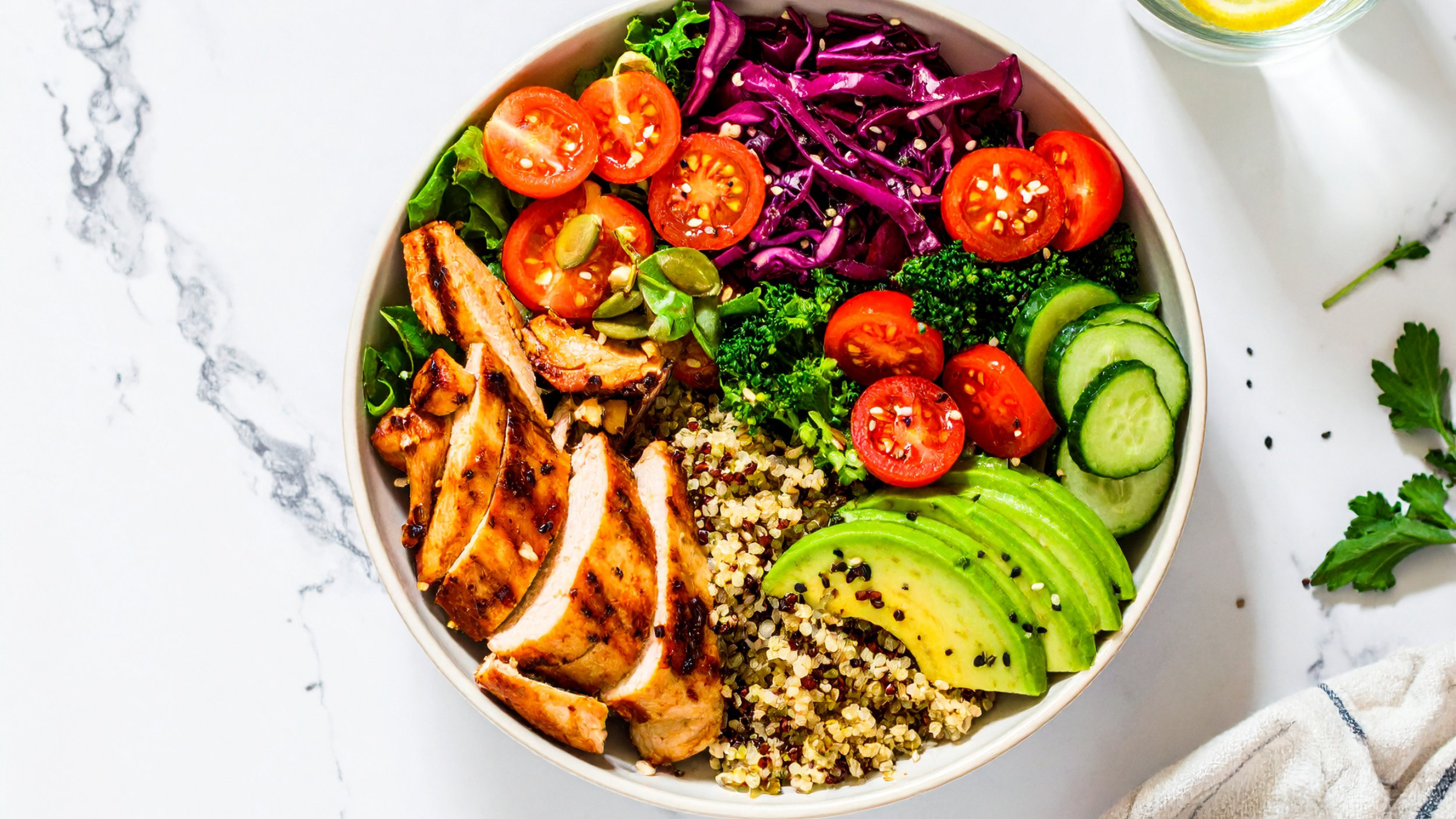Weight Loss After 45: The Struggle Is Real, But So Are the Solutions
Strength knows no age, empower yourself through every stage of life.
Something shifts when you hit your mid-forties, well, if I'm honest, the shift happens even earlier than 45. The reflection in the mirror doesn't quite match the person you feel like inside. For me, it started with a pair of jeans that suddenly felt a size too small, and a number on the scale that refused to budge no matter what I did. I tried everything that worked in my twenties and thirties, adding an extra cardio session or limiting my calories, but the weight clung on stubbornly. It was frustrating, demoralizing, and honestly, it felt deeply unfair. For a period of time, I gave up. I resolved to take the weight loss shots.
Losing weight after 45 is a whole different game. It's not just about willpower or eating less. Your body is navigating a complex new landscape of hormonal shifts, a slowing metabolism, and the accumulated stress of decades of life. If you're finding it harder than ever to lose weight, you're not imagining it, and you are far from alone. This journey is tough, but it is not impossible.
The Uphill Battle: Why Is Losing Weight After 45 So Difficult?
Before you can find the right solution, it's important to understand the challenge. The rules of weight loss change after a certain age, and several biological factors are at play. Recognizing these obstacles was the first step for me in stopping the cycle of blame and starting a path toward real progress.
The Metabolic Slowdown
As we age, our metabolic rate, the speed at which our body burns calories at rest, naturally declines. This is largely due to sarcopenia, the gradual loss of muscle mass that begins in our thirties and accelerates after 40. Since muscle tissue is more metabolically active than fat, having less of it means your body burns fewer calories throughout the day. That daily calorie deficit you used to create so easily now requires a much more deliberate effort.
The Hormonal Rollercoaster
Hormones are powerful messengers that control everything from your mood to your appetite, and they go through significant changes in your forties and beyond. For women, perimenopause and menopause bring a drop in estrogen, which is linked to an increase in abdominal fat. For men, testosterone levels decline, which can lead to reduced muscle mass and increased body fat. On top of that, levels of the stress hormone cortisol often rise, which can trigger cravings for high-fat, sugary foods and encourage fat storage around the midsection.
The Demands of a Busy Life
Let's be realistic: life at 45 is often more demanding than it was at 25. You might be juggling a demanding career, caring for kids and aging parents, and managing a household. Finding time and energy for meal prep and consistent workouts can feel like an impossible task. Sleep often takes a backseat, but poor sleep disrupts the hormones that regulate hunger, such as ghrelin and leptin, making you feel hungrier and less satisfied after meals. It's a perfect storm for weight gain.
A Smarter Strategy: The Best Approaches for Lasting Success
After numerous failed attempts, I realized that my old methods weren't just ineffective; they were actually working against my body. The key to success wasn't trying harder, but trying smarter. I shifted my focus from quick fixes to sustainable, science-backed strategies that will serve me well in the long run.
Prioritize Strength Training
Cardio is great for your heart, but strength training is the secret weapon for anyone over 45. Building and maintaining muscle is one of the most effective ways to counteract a slowing metabolism. More muscle means your body burns more calories, even when you're resting.
Don't be intimidated by the idea of lifting weights. You can start with bodyweight exercises like squats, push-ups, and lunges, or use resistance bands. Aim for two to three sessions a week, focusing on compound movements that work multiple muscle groups at once.
Fuel Your Body with Nutrient-Dense Foods
You can't out-train a bad diet, especially not after 45. But this isn't about severe restriction. It's about focusing on foods that provide the most nutritional bang for your buck.
Lean Protein is Your Best Friend: Protein is crucial for building muscle and keeping you full. Include a source of lean protein like chicken, fish, tofu, or beans in every meal. This small change can help curb cravings and keep you satisfied for hours.
Embrace Fiber: High-fiber foods like vegetables, fruits, and whole grains help regulate blood sugar, support digestive health, and promote fullness. Fill half your plate with non-starchy vegetables at every meal.
Don't Fear Healthy Fats: Fats from sources like avocados, nuts, seeds, and olive oil are essential for hormone production and absorbing certain vitamins. They also add flavor and help you feel satiated.
Recipe: Quinoa and Veggie Power Bowl
This delicious and nutrient-packed power bowl perfectly complements the healthy eating tips outlined above. It's rich in fiber, healthy fats, and whole ingredients to fuel your day.
Fuel your body with a nutrient-packed bowl of quinoa, high in protein, fiber, and essential nutrients for a balanced meal.
Ingredients:
1 cup cooked quinoa
1 cup baby spinach or mixed greens
1/2 cup cherry tomatoes, halved
1/4 cup cucumber, diced
1/4 avocado, sliced
2 tablespoons hummus
1 tablespoon olive oil
1 teaspoon lemon juice
Salt and pepper to taste
Optional toppings: pumpkin seeds, sesame seeds, or a boiled egg for extra protein
Directions:
Begin by preparing the quinoa according to package instructions. Allow it to cool slightly before assembling the bowl.
Arrange the baby spinach or mixed greens as the base of your power bowl.
Add the cooked quinoa, cherry tomatoes, cucumber, and sliced avocado on top.
Drizzle olive oil and lemon juice over the ingredients. Season with salt and pepper to your liking.
Add a dollop of hummus in the center for added creaminess.
If desired, sprinkle pumpkin seeds, sesame seeds, or add a boiled egg for extra nutrients and texture.
Mix everything together before eating, or enjoy it as a beautifully layered bowl.
This recipe is quick, versatile, and packed with the wholesome elements your body needs. Feel free to customize it with your favorite veggies or protein sources!
Make Sleep a Non-Negotiable
For many people, sleep will be a game-changer. Some people view sleep as a luxury, but it is a critical part of any health routine. Aim for 7-9 hours of quality sleep per night. When you're well-rested, your hormones work for you, not against you. You'll have more energy for workouts, fewer cravings, and a clearer mind to make healthy choices.
Manage Stress and Practice Self-Compassion
Chronic stress and high cortisol levels will sabotage your best efforts. Find healthy ways to manage stress that work for you, whether it's walking in nature, meditation, journaling, or simply taking 10 minutes to sit quietly with a cup of tea.
Most importantly, be kind to yourself. This journey has bumps, and you will have off days. The goal is not perfection; it's consistency. The fun part of the journey is celebrating small victories, like choosing a healthy snack or fitting in a quick workout, instead of fixating on the number on the scale.
You Can Do This
Losing weight after 45 is a journey of rediscovery. It's about learning to work with your body, not against it. You might have to let go of the quick-fix mentality and embrace a lifestyle that truly nourishes your body and mind. The process is slower, and it requires more patience, so buckle up for the ride; the results are far more rewarding. You're not just losing weight; you're building a stronger, healthier, and more resilient version of yourself for the decades to come. Take it one day at a time, and know that you have the strength to succeed.


